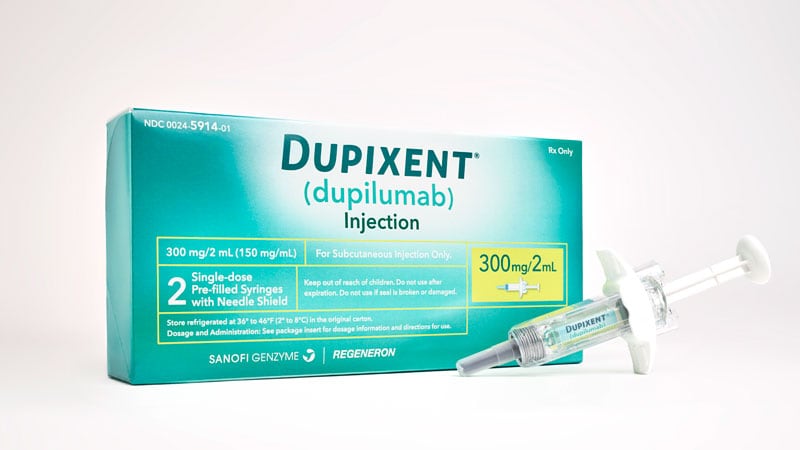TOPLINE:
Treating atopic dermatitis (AD) with dupilumab vs other systemic agents increased the risk of developing psoriasis over 3 years, a cohort study found.
METHODOLOGY:
- Addressing postmarketing reports of psoriasis in patients treated with dupilumab for AD, researchers conducted a population-based retrospective cohort study of 214,430 adults with AD from the TriNetX Global Collaborative Network, with a 3-year follow-up. Analyses were completed on October 19, 2024.
- The study compared 9860 adults newly prescribed dupilumab vs 9860 prescribed other systemic agents, which were corticosteroids, methotrexate, cyclosporine, azathioprine, or mycophenolate mofetil.
- The mean age in both groups was about 45 years; about 55% were women; about half were White, 18% were Black, and 10% were Asian.
- The primary outcome measure was incident psoriasis, and the secondary outcome was psoriatic arthritis (PsA).
TAKEAWAY:
- Over 3 years, 2.0% of patients on dupilumab developed psoriasis vs 1.1% of those taking other systemic agents (P < .001).
- Psoriasis risk was significantly higher in patients on dupilumab (hazard ratio [HR], 1.58; 95% CI, 1.25-1.99). The number needed to harm (NNH) for psoriasis was 94 for dupilumab vs the other systemic agents.
- Psoriasis risk was also higher in patients on dupilumab who were older than 60 years (HR, 1.77; 95% CI, 1.22-2.58), men (HR, 1.55; 95% CI, 1.08-2.22), women (HR, 1.63; 95% CI, 1.19-2.24), and White (HR, 1.43; 95% CI, 1.05-1.93).
- At 3 years, PsA incidence with dupilumab vs other systemic agents was similar (0.20% vs 0.13%; P = .53). The risk was not statistically significant (HR, 1.97; 95% CI, 0.75-5.18).
IN PRACTICE:
The study found an increased relative risk for psoriasis among those treated with dupilumab, the study authors wrote, adding that an estimated NNH of 94 reflected the limited clinical relevance of the absolute risk, and “risk should be weighed against dupilumab’s proven efficacy in treating AD.” They noted that the rate of psoriasis was in the range of psoriasis prevalence in general AD populations, suggesting that “dupilumab may act more as a trigger rather than a decisive factor in promoting psoriatic eruption in patients with AD.”
SOURCE:
The study was led by Teng-Li Lin, MD, Dalin Tzu Chi Hospital, Buddhist Tzu Chi Medical Foundation in Chiayi, Taiwan. It was published online on June 18 in JAMA Dermatology.
LIMITATIONS:
Limitations included the observational design, possible misclassification bias in outcome reporting, and absence of information on AD severity, physician specialties, photodocumentation, and treatment response. Because the database only supported time-fixed medication exposure analyses, data on dosage, duration, and adherence were unavailable.
DISCLOSURES:
The research received support from the National Science Technology Council and Taichung Veterans General Hospital, both in Taiwan. The authors had no competing interests.
This article was created using several editorial tools, including AI, as part of the process. Human editors reviewed this content before publication.
Source link : https://www.medscape.com/viewarticle/dupilumab-linked-higher-psoriasis-risk-atopic-dermatitis-2025a1000gbo?src=rss
Author :
Publish date : 2025-06-19 04:24:00
Copyright for syndicated content belongs to the linked Source.
